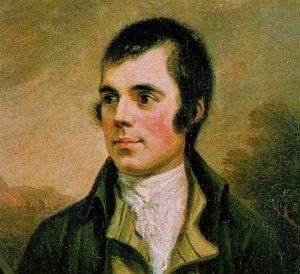
Ever tried to capture the dynamic of that transition in time which is New Year? Few have bettered Scotsman, Rabbie Burns attempt in 1790:
“And what is this day’s strong suggestion?/‘The passing moment is all we rest on!'”
Hymn writers have to consider what words and concepts will work across eras in their poetry. Samuel Longfellow born 200 years ago offered this reflection, still sung as a hymn:
Tis winter now; the fallen snow/ has left the heavens all coldly clear;/ though leafless boughs the sharp winds blow/and all the earth lies dead and drear.
And yet God’s love is not withdrawn;/ his life within the keen air breaths;/his beauty paints the crimson dawn/ and clothes each branch with glittering wreathes
Isaac Watts was probably the most influential of hymn writers. Here a clip reveals his version of Psalm 90, written in 1738 and still sung every New Year and at Remembrance services. The tune, St Anne’s was written in 1708 by the organist of St Anne’s church Soho – William Croft. This music was valued and was used by Handel, Parry, Vaughan Williams, Arthur Sullivan.
It would be good if more of us tried to engage with the task of capturing the dynamic of transition which is New Year from our unique experience and perspective. Perhaps our words or melody will be making an impact in 200 years…
